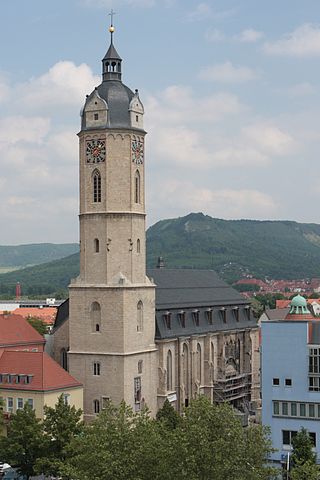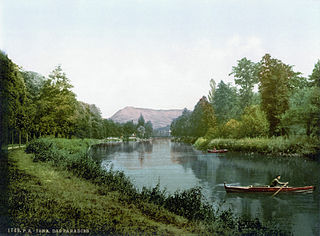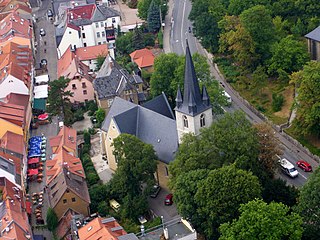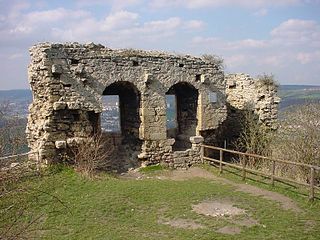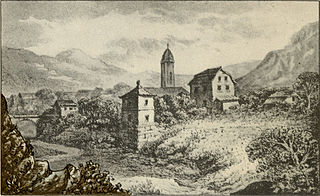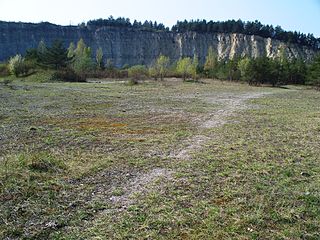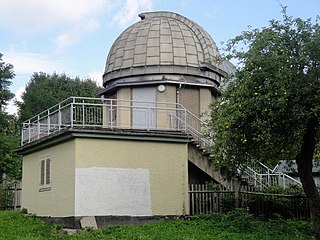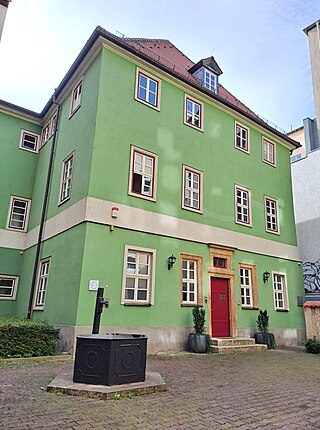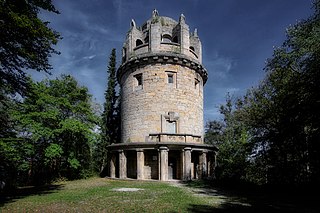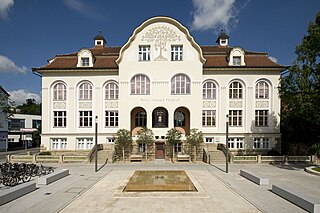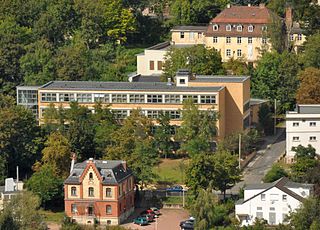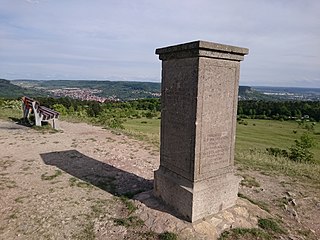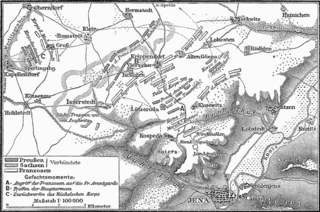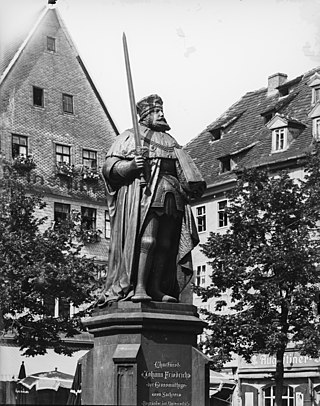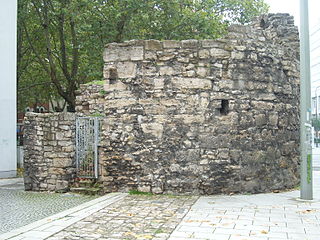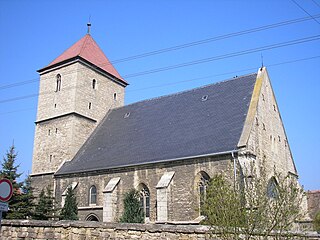21 Sights in Jena, Germany (with Map and Images)
Legend
Welcome to your journey through the most beautiful sights in Jena, Germany! Whether you want to discover the city's historical treasures or experience its modern highlights, you'll find everything your heart desires here. Be inspired by our selection and plan your unforgettable adventure in Jena. Dive into the diversity of this fascinating city and discover everything it has to offer.
Sightseeing Tours in Jena1. St. Michael
The Protestant town church of St. Michael in Jena has been the centre of church life in the city (Parochial Church) for over 750 years. Regular invitations are issued here for church services – usually starting on Sundays at 10 a.m. and 6 p.m. – at times of prayer and silence as well as for church music events. Located in the city centre, it characterises the cityscape. It is the main sermon church in the Jena church district.
2. Paradies
Volkspark Oberaue in Jena is the only park in Thuringia with the designation Volkspark. The park consists of three adjacent areas: Rasenmühleinsel, Paradies and Oberaue. Since 2002 it has been classified as a cultural monument.
3. St. Johannes Baptist
The Roman Catholic parish church of St. John the Baptist is located in the Thuringian city of Jena. It is the parish church of the parish of St. John the Baptist Jena in the Weimar deanery of the Diocese of Erfurt. It bears the patronage of St. John the Baptist.
4. Burg Greifenberg
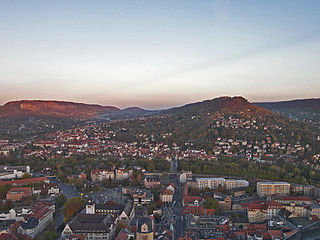
The Hausberg near Jena is an elongated 391.7 m high shell limestone mountain east of Jena in Thuringia. The mountain on which the Fuchsturm observation tower is located is a popular hiking destination near the city.
5. Burg Gleißberg
Gleißberg Castle, today usually called Kunitzburg after the Jena district of Kunitz below, is the ruin of a hilltop castle at 325 m above sea level (foundation walls) five kilometres northeast of the town at the northern end of the so-called "Hufeisen". This is formed by the Jenzig and the steep Großer Gleisberg, which juts out to the west into the Saale valley. The ruins belong to the Kunitz corridor, but a few metres downhill runs the border to the Golmsdorf corridor.
6. Schillers Gartenhaus
Schiller's garden house is one of only two surviving residences of Friedrich Schiller in Jena, where he lived with his family in the summers of 1797 to 1799. Some of his most important works were written here, such as parts of Wallenstein and Mary Stuart, as well as numerous ballads. In 1799 Schiller moved with his family to Weimar, but did not finally give up the Jena garden house until 1801. The house is now owned by the Friedrich Schiller University, which maintains a museum and a place of discourse with numerous forms of events here.
7. Mönchsberg
The Mönchsberg is a mountain in the vicinity of Jena, south of Winzerla and northwest of Göschwitz. It can be reached via hiking trails from both districts. From here it is possible to reach the Leutratal or the Ammerbacher Platte on hiking trails, both well-known destinations for hikes in Jena's surroundings. As the third highest elevation of the Jena floe, its height is 399 m, according to the Thuringian State Institute for Environment and Geology.
8. Burschenschaftsdenkmal
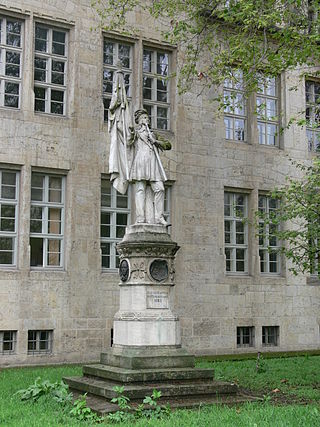
The Burschenschaft Monument in Jena was erected on 12 June 1883 to commemorate the founding of the Urburschenschaft in 1815 on the historic Eichplatz in front of the Burschenschaftseiche (1816–1968). Since 1951, the location has been in front of the main building of the university.
9. Volkssternwarte Urania
The Urania Jena Public Observatory is an observatory operated by a non-profit association of the same name as the successor to the Zeiss factory observatory. It is located in Schillergäßchen in the center of the city of Jena.
10. Romantikerhaus
The Romantikerhaus Jena is a museum that is committed to researching, preserving and communicating Jena's early Romanticism. As part of the Jena Municipal Museums, it belongs to the JenaKultur company. It is the only museum in Jena under municipal sponsorship that exclusively commemorates the cultural heyday of the city around 1800 and questions its significance for modern art and culture.
11. Bismarckturm Jena
Jena's Bismarck Tower stands on the summit of the 328-metre-high Tatzend. It was built in 1909 on the initiative of the Jena students in honour of Bismarck and commemorates Bismarck's visit to Jena in 1892.
12. Phyletisches Museum
Jena Phyletisches Museum is a museum in the German town of Jena. It was established by the scientist Ernst Haeckel, as an institute dedicated to explaining evolution to the public. Exhibits include skeletons, stuffed animals, fossils and zoological artworks from Haeckel's Kunstformen der Natur, and cover topics including the principles of evolution, biodiversity and the links between different taxonomic groups.
13. Abbeanum
The Abbeanum is a teaching and research building of the Friedrich Schiller University Jena. It was built in the Bauhaus style between 1929 and 1930 with funds from the Carl Zeiss Foundation, founded by Ernst Abbe. The former Bauhaus student Professor Ernst Neufert was won over as the architect. At that time, the building was used by the Optical Institute and the Institute of Applied Mathematics.
14. Dreifaltigkeitskirche
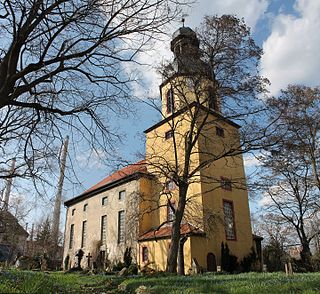
The Protestant Trinity Church is located in the Burgau district of the city of Jena in Thuringia. It belongs to the pastoral district of Jena-Süd of the church district of Jena in the bishopric of Erfurt of the Evangelical Church in Central Germany.
15. Napoleonstein
The Napoleon Stone is a monument to the Battle of Jena and Auerstedt and is located on the Windknollen northwest of Jena at an altitude of 363 m. Due to its location on this hill close to the city, the Napoleon Stone is a popular destination for the people of Jena.
16. Windknollen
The Windknollen near Jena, also known as Napoleonsberg in the 19th century, is a 363-metre-high, bare mountain with short-grass vegetation. The Napoleon Stone is also located here. The landscape on this high plateau is similar to the North American prairie as well as the South American prairie and the Mongolian steppe. Essentially, subcontinental semi-dry grasslands extend over an extensive, unused agricultural area, which is designated as a nature reserve. From a geological point of view, shell limestone forms the subsoil. In addition to the lawns, there are protected orchid species, thyme herb and rosehip bushes. Some damp depressions are home to frogs, grass snakes, crested newts and pond newts, a variety of aquatic insects, and sometimes even crucian carps. It is also the territory of the red kite, the kestrel and the hawk. On their migration, snipe birds, little ringed plovers and snipe rest here.
17. Hanfried
The Hanfried is a bronze figure on the market in Jena in memory of Johann Friedrich I of Saxony, the founder of the city's university. The monument was unveiled on the occasion of the university's 300th anniversary celebration on August 18, 1858.
18. Botanical Garden
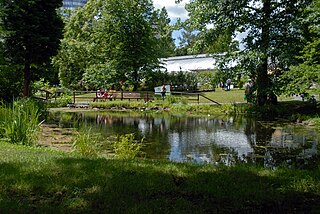
The Botanischer Garten Jena is the second oldest botanical garden in Germany, maintained by the University of Jena and located at Fürstengraben 26, Jena, Thuringia, Germany. It is open daily; an admission fee is charged.
19. Anatomieturm
The Anatomy Tower is a ruined round tower and part of the remains of the city wall of Jena. It was the southwestern corner of the medieval city boundary, is located on the Teichgraben and Leutragraben and in the immediate vicinity of the Anatomical Institute and the Collegium Jenense.
20. Kirche zu den vierzehn Nothelfern
The church of Vierzehnheiligen in Vierzehnheiligen, a district of the district-free city of Jena in Thuringia, belongs to the Evangelical Lutheran church district of Jena. The parish association Vierzehnheiligen comprises 14 villages with 13 churches. The church was given the patronage of Fourteen Helpers in 1464 and was a pilgrimage church until 1539.
21. Johannistor
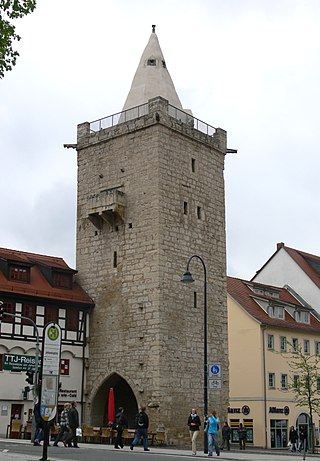
The Johannistor is the only remaining preserved city gate of the city of Jena, Thuringia, Germany. As part of the medieval city wall, it is connected to the Pulverturm via a reconstructed walkway. The outer gate remained in existence until the beginning of the nineteenth century, when it was demolished as a result of increasing traffic. Until the houses lining the south side of Johannisstrasse were demolished in 1968, the Johannistor remained the only western entrance to the old town of Jena.
Share
How likely are you to recommend us?
Disclaimer Please be aware of your surroundings and do not enter private property. We are not liable for any damages that occur during the tours.
